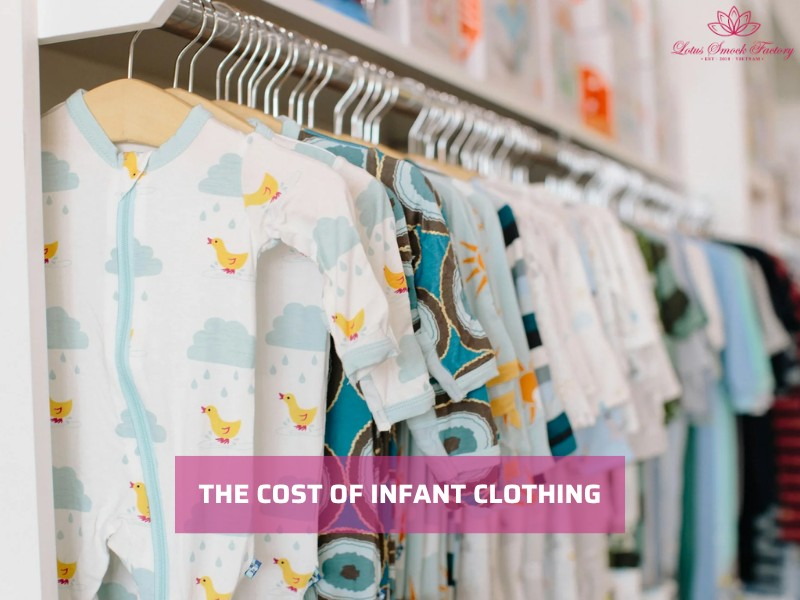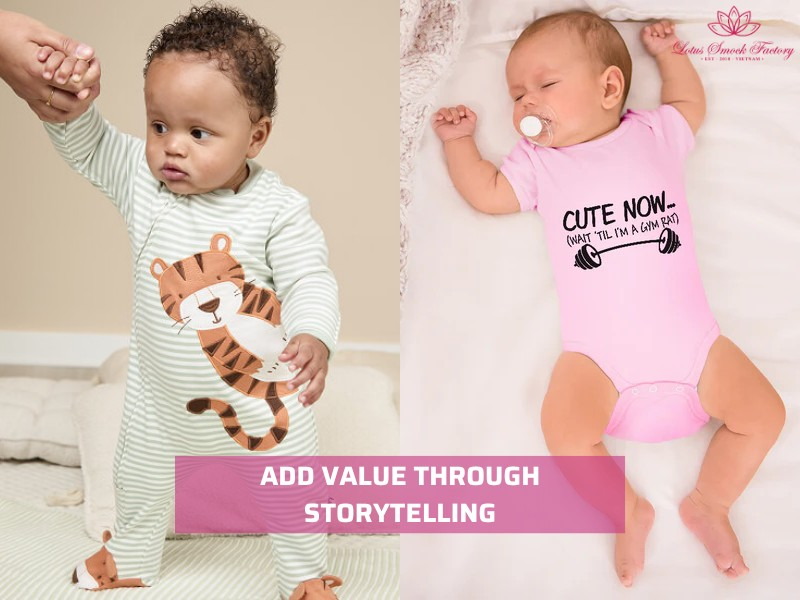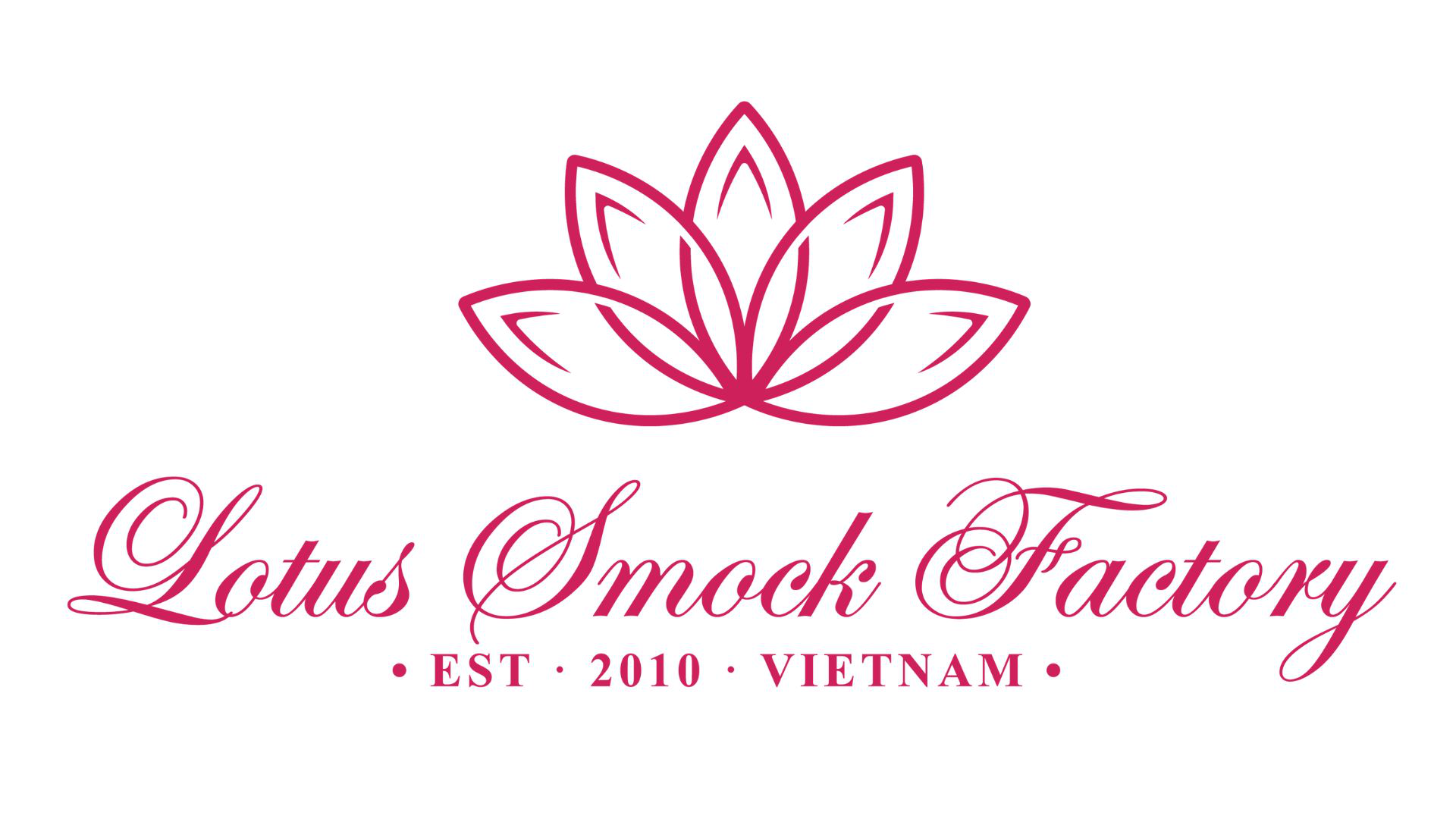Are Baby Clothes Expensive? Here’s What You’re Actually Paying For
Many new parents wonder, “Are baby clothes expensive?” The answer depends on more than fabric and size. Babywear combines comfort, safety, and craftsmanship, from soft organic cotton to careful stitching and quality checks. Handmade and boutique pieces often cost more, but they last longer and feel better on sensitive skin.
Whether you buy from big brands or small ateliers, understanding what drives the price helps you choose smarter for your baby or your store. Let’s uncover what really makes baby clothes cost more and how to shop or source them wisely.
1. Understanding the Cost of Infant Clothing
The cost of infant clothing depends on many small but significant factors, not just the size of the fabric. Making baby apparel requires the same steps as adult garments, but often with more precision and safety standards. Let’s look at what actually shapes baby apparel pricing factors and why smaller clothes don’t always mean smaller costs.
1.1. Why Smaller Doesn’t Mean Cheaper
Many parents expect baby clothes to cost less because they use less fabric. In reality, the opposite is often true.
- Each baby outfit still goes through cutting, stitching, trimming, inspection, and packaging, the same as adult wear.
- Workers spend nearly the same amount of time handling each piece since smaller garments require more careful stitching and finishing.
- Factories face similar costs for utilities, labor, and compliance regardless of garment size.
In short, babywear manufacturing saves little on fabric but demands higher precision and safety checks, keeping production costs steady.
1.2. Labor and Craftsmanship
Labor is one of the biggest cost drivers in babywear. The difference between mass-produced and handmade baby clothes is clear in both price and quality.
- Mass-produced clothes are machine-stitched quickly but may lack durability.
- Handmade or hand-smocked clothes require several hours per piece. Each pleat and embroidery detail adds time but creates stronger seams and a longer life.
- Skilled artisans charge higher rates, reflecting the manual care involved in small-batch production.
When you pay more for a hand-embroidered outfit, you’re not paying for branding; you’re paying for time, skill, and craftsmanship that machines can’t replace.
1.3. Materials and Safety Standards
Materials are another reason why baby clothes cost more than expected. Babies have sensitive skin, so every fabric and dye must meet strict safety standards.
- Common materials: 100% cotton, bamboo fiber, linen, and organic cotton blends.
- Certifications: OEKO-TEX and CPSIA compliance guarantee that fabrics are free from harmful chemicals.
- Organic baby clothes cost more because sourcing organic cotton and testing for toxins increases production expenses.
In addition, babywear must often pass flammability, lead, and colorfastness tests, adding more layers of cost before reaching the store shelf.

=>>> Read more: Top 10+ Smocked Dresses for Newborns That Boutiques Should Stock [Latest Update]
2. Why Are Baby Clothes So Expensive Compared to Adult Apparel
Many parents wonder why baby clothes are so expensive when they look smaller and simpler than adult outfits. The truth lies in how they’re made, shipped, and sold. Boutique-level production, strict safety standards, and retail markups all contribute to the final price you see in stores. Let’s break down the main factors that shape baby clothes brand pricing today.
2.1. High Quality in Small Batches
Baby clothes are often made in small production runs, which directly raises their cost.
- Manufacturers use low minimum order quantities (MOQs) to maintain flexibility for boutiques and small brands.
- Smaller batches mean factories can’t spread fixed costs, labor, pattern setup, or quality inspection over thousands of units like mass brands do.
- Each piece is hand-smocked or embroidered, requiring hours of artisan work, which increases value but also total production time.
Smaller runs guarantee exclusivity and quality control, but they make each item more expensive to produce than mass-market fashion.
2.2. Retail Markup and Logistics
Another big factor in babywear pricing is the long path from factory to customer.
Here’s how the cost builds up:
- Factory: Produces the garment and sells to the brand at base cost.
- Brand: Adds marketing, design, testing, and packaging costs.
- Retailer: Applies a markup to cover shipping, inventory, and profit margins.
- Average retail markups range from 100% to 250%, depending on the brand’s positioning.
- Shipping fees, customs tariffs, and returns also add to the final cost.
For international suppliers, freight and import taxes can increase the retail price by another 10–20%.
In short, a baby dress that costs $15 to produce can easily reach $45–$60 retail once logistics and markups are included.
2.3. Design and Seasonal Trends
Unlike adult basics, baby clothes often follow seasonal or themed designs.
- Patterns and embroidery for Christmas, Easter, or summer collections require separate design work and small-batch production.
- Limited-edition lines increase costs but also build perceived exclusivity for boutique brands.
Handmade details such as embroidery, lace trims, or pleating take additional time and skill to produce.

4. Affordable Baby Clothes: How to Buy Smart Without Compromising Quality
Finding affordable baby clothes doesn’t mean sacrificing comfort or durability. Smart buyers, whether parents or boutique owners, know how to balance essentials, timing, and sourcing. With a few baby wardrobe budget tips, you can get premium quality without paying luxury prices.
4.1. Focus on Comfort and Essentials
Babies grow quickly, so it’s better to invest in a few comfortable basics rather than a large, trendy wardrobe. Stick to essential items that work across seasons and occasions.
5 must-have basics for every baby:
- Soft cotton onesies or bodysuits (7–10 pieces for daily wear).
- Lightweight sleepers or pajamas (5–8 pieces).
- Stretchy pants or leggings (4–6 pairs).
- Socks and mittens to keep little feet and hands warm.
- A few seasonal outerwear pieces, like sweaters or rompers.
Avoid overspending on fancy outfits or one-time holiday themes. Focus on breathable fabrics, flat seams, and easy snaps; these details matter more than trends.
4.2. Seasonal Timing and Sales Cycles
Buying at the right time can cut your baby clothing costs by 30–50%.
- Post-season sales: Buy winter clothes in February and summer clothes in August.
- Holiday off-peak periods: Shop between holidays, when brands clear old stock.
- Online flash sales: Many boutiques offer discounts right before new collections launch.
Plan babies grow fast, so buying one size up during clearance events helps you save while staying prepared for the next stage.
4.3. Consider Handmade Direct Suppliers
If you want affordable yet high-quality babywear, consider buying directly from handmade suppliers instead of big retail brands.
Example:
Lotus Smock, a boutique manufacturer handmade in Vietnam, offers low minimum orders (30 pieces per style) with heirloom-level quality, without the heavy designer markup.
| Type | Average Price per Piece | Quality Level | MOQ | Origin |
| Retail Luxury Brand | $45–60 | High | None | UK/US |
| Boutique Handmade (Lotus Smock) | $20–30 | High (Handmade) | 30 pcs/style | Vietnam |
Pro Tip: Boutiques working with Lotus Smock pre-sell up to 70% of their stock using free 2D mock-ups before production, cutting cash risk to nearly zero while maintaining premium quality.
=>>> Find more lists of Christmas smock outfits: Top 10 Christmas Smocked Romper Styles for Your Boutique This Holiday Season
5. For Boutique Buyers: How to Price Baby Clothes and Still Profit
Setting the right boutique baby clothing price can make or break your profit margins. Boutique owners must balance fair pricing, strong storytelling, and proper timing to stay competitive without devaluing their products. Here’s how to build a profitable pricing strategy while maintaining quality and customer trust.
5.1. Know Your Margins
Every boutique should understand how to calculate and track margins clearly. The basic formula is simple:
Profit Margin (%) = (Selling Price – Cost Price): Selling Price x 100
- For boutique babywear, realistic margins range between 50% and 65%.
- Handmade or custom-embroidered pieces can command up to 70% markup due to craftsmanship and limited availability.
- Always include packaging, shipping, and marketing costs when setting your final price.
Keeping a steady margin allows you to reinvest in new collections while staying sustainable.
5.2. Add Value Through Storytelling
Boutique customers buy more than clothes; they buy meaning. Use storytelling to justify your price and connect emotionally with your audience.
Ways to add value through story:
- Highlight authenticity: “Hand-embroidered by artisans in Vietnam using 100% cotton.”
- Share the process: show behind-the-scenes photos of stitching or pleating.
- Emphasize ethical sourcing: mention low-waste production or fair wages.
A transparent and authentic story helps transform your baby clothes brand pricing from a number into a reflection of care, craftsmanship, and culture.

5.3. Predict Seasonal Demand
Timing matters just as much as pricing. Understanding demand cycles helps boutiques keep inventory moving and avoid markdown losses.
- Source early for key holidays — Christmas, Easter, Back-to-School — to catch peak buying periods.
- Partner with suppliers offering 30–35 day turnaround times and 5–7 day FedEx delivery, like Lotus Smock.
- Early sourcing ensures better design options, faster restocks, and higher resale margins.
When boutiques plan, they enjoy faster turnover, stronger profits, and satisfied customers ready for every season.
=>>> Read more: Baby Fashion Trends This Season: Top 10+ Outfits Every Boutique Should Stock
6. FAQs
Q1: Why are organic baby clothes more expensive?
Organic baby clothes cost more because of certified materials and sustainable farming. Organic cotton and bamboo fabrics avoid chemicals, requiring more labor and water management. Each fabric batch goes through extra safety tests (like OEKO-TEX or CPSIA certification), which adds to production cost but guarantees comfort and skin safety for infants.
Q2: How much do parents typically spend per month on baby clothes?
On average, parents spend $40–$70 per month in the first year, depending on lifestyle and climate. Babies grow fast and often need new sizes every 2–3 months. Those who buy boutique or organic clothing may spend slightly more but get better durability and comfort.
Q3: Are handmade baby clothes worth the price?
Yes, handmade clothes are usually worth it if you value quality and longevity. Each piece is sewn and embroidered with care, often using natural cotton. Hand-smocked or embroidered items, such as those from Lotus Smock, last through multiple washes and can even be passed down to younger siblings, saving money in the long run.
Q4: Do boutique clothes last longer than fast-fashion ones?
Generally, yes. Boutique clothes are made in small batches with higher stitching standards and softer fabrics. Fast-fashion babywear may cost less upfront but tends to lose shape or fade after a few washes. Boutique pieces hold up better and can be reused or resold at good value.
Q5: How can I tell if a baby outfit is good value?
Look for three key things:
- Fabric quality: 100% cotton or bamboo feels soft and stays durable.
- Finishing: Even stitching and smooth seams mean longer wear.
- Function: Easy snaps and stretchable cuts make daily use simpler.
A baby outfit with these qualities offers both comfort and value — no matter the price tag.
7. Final Words
So, are baby clothes expensive? Yes, but often for good reason. Quality babywear reflects safe materials, detailed work, and small-batch care that mass fashion can’t match. When you know where the value comes from, you can spend less but buy better. Parents can save with smart timing and trusted brands, while boutiques can partner with handmade suppliers for lasting profit.
Ready to find real value in your next purchase or order? Let’s explore affordable, high-quality options that keep both babies and budgets happy.

